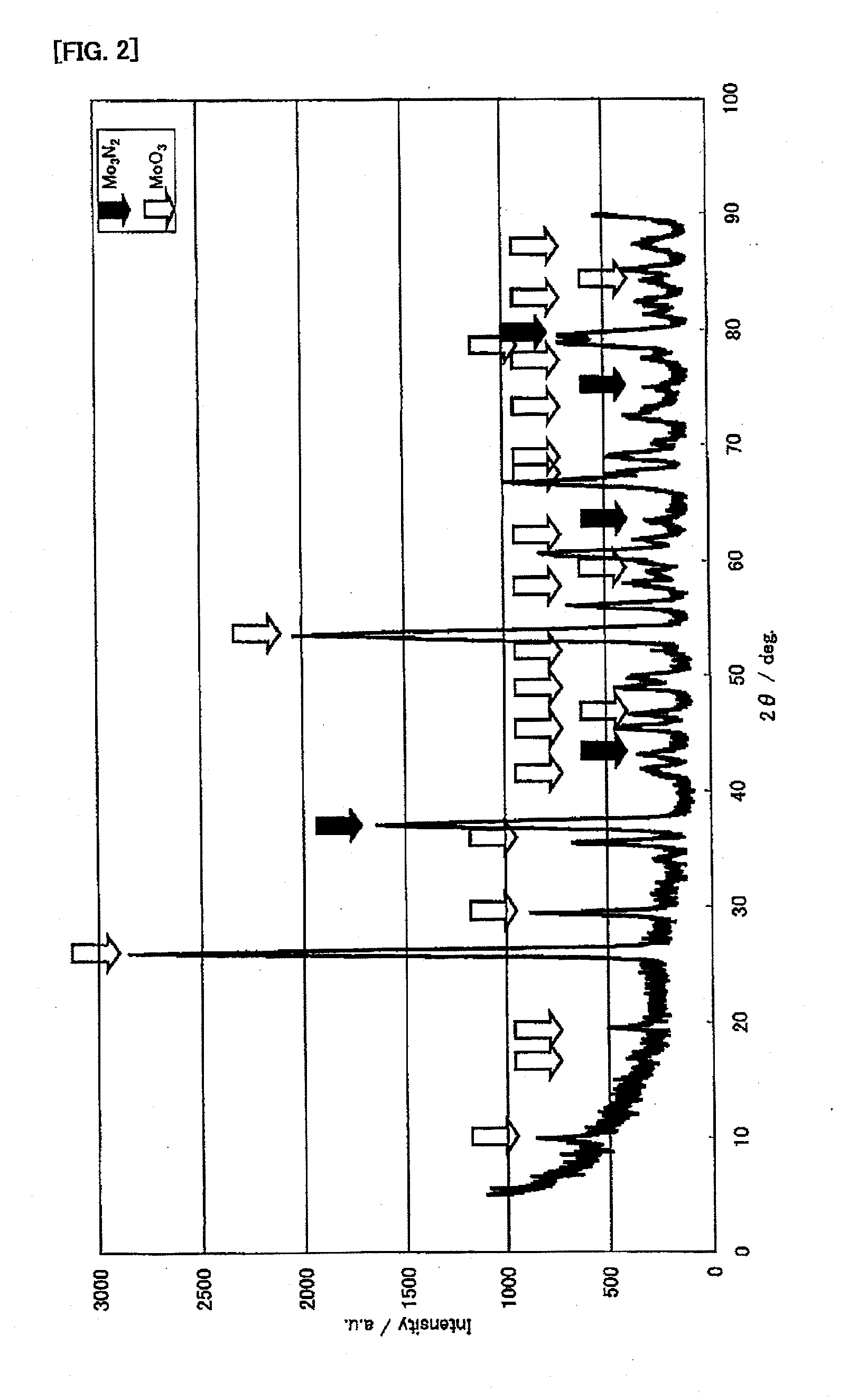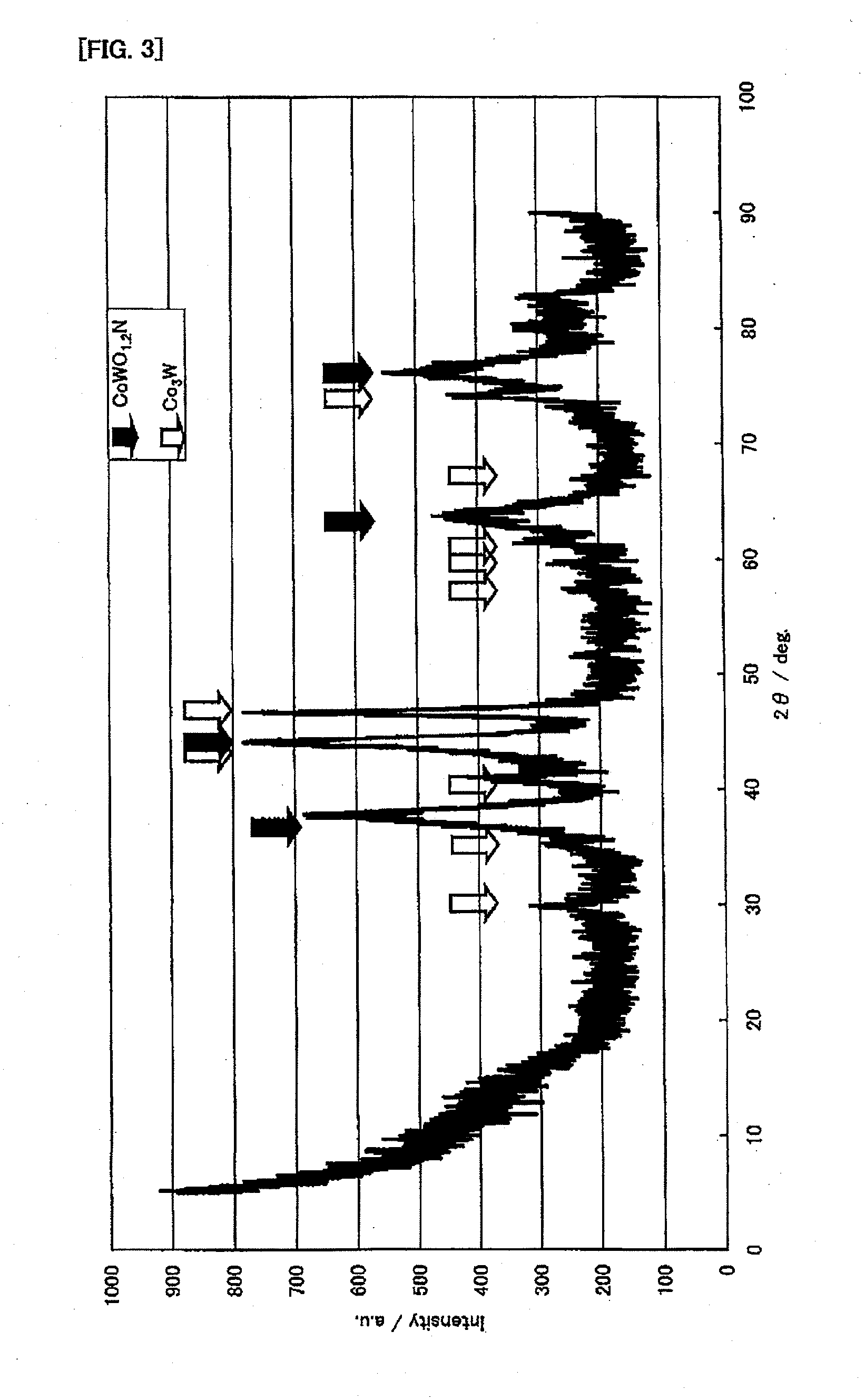Ammonia decomposition catalysts and their production processes, as well as ammonia treatment method
a technology of ammonia decomposition catalyst and ammonia treatment method, which is applied in the direction of catalyst activation/preparation, metal/metal-oxide/metal-hydroxide catalyst, etc., can solve the problems of low ammonia decomposition rate, unfavorable method, and nox production, and achieves simple and easy manner
- Summary
- Abstract
- Description
- Claims
- Application Information
AI Technical Summary
Benefits of technology
Problems solved by technology
Method used
Image
Examples
examples
[0140]The present invention will be explained below more specifically by reference to Experimental Examples, but the present invention is not limited to these Experimental Examples. The present invention can be put into practice after appropriate modifications or variations within a range meeting both of the gist described above and below, all of which are included in the technical scope of the present invention.
[0141]—Ammonia Decomposition Catalyst (I)—
[0142]First, the following will explain production examples and performance evaluations of the ammonia decomposition catalyst (I). In this connection, for X-ray diffraction measurements, an X-ray diffractometer (product name “RINT-2400” available from Rigaku Corporation) was used. The X-ray diffraction measurements were made, using CuKα (0.154 nm) for an X-ray source, under the measurement conditions: the X-ray output was 50 kV and 300 mA; the divergence slit was 1.0 mm; the divergence vertical limit slit was 10 mm; the scanning spee...
experimental example i-1
[0143]First, 80.00 g of cobalt nitrate hexahydrate was dissolved in 400.00 g of distilled water. Separately, 48.53 g of ammonium molybdate was gradually added to and dissolved in 250 g of boiled distilled water. After both aqueous solutions were mixed together, the mixture was heated and agitated, and was evaporated to dryness. The obtained solid product was dried at 120° C. for 10 hours, was then baked at 350° C. in a stream of nitrogen for 5 hours, and was baked at 500° C. in a stream of air for 3 hours. It was confirmed by the X-ray diffraction measurements that α-CoMoO4 was obtained.
[0144]Further, a reaction tube made of SUS316 was filled with from 0.5 to 1.0 mL of α-CoMoO4, and the temperature was increased to 400° C. while from 30 to 50 mL / min of a nitrogen gas (hereinafter abbreviated as “nitrogen”) was allowed to flow. Then, an ammonia decomposition catalyst (hereinafter referred to as “CoMoO4”) was obtained by carrying out the treatment of increasing the temperature to 700°...
experimental example i-2
[0145]First, 80.00 g of cobalt nitrate hexahydrate was dissolved in 400.00 g of distilled water. Separately, 48.53 g of ammonium molybdate was gradually added to and dissolved in 250 g of boiled distilled water. After both aqueous solutions were mixed together, the mixture was heated and agitated, and was evaporated to dryness. The obtained solid product was dried at 120° C. for 10 hours, was then baked at 350° C. in a stream of nitrogen for 5 hours, and was baked at 500° C. in a stream of air for 3 hours. It was confirmed by the X-ray diffraction measurements that α-CoMoO4 was obtained.
[0146]Then, 0.089 g of cesium nitrate was dissolved in 3.23 g of distilled water. The resulting aqueous solution was uniformly penetrated into 6.00 g of α-CoMoO4 in a dripping manner, and the resulting product was dried at 90° C. for 10 hours. Then, it was confirmed by the X-ray diffraction measurements that α-CoMoO4 was obtained.
[0147]Further, a reaction tube made of SUS316 was filled with from 0.5 ...
PUM
| Property | Measurement | Unit |
|---|---|---|
| temperature | aaaaa | aaaaa |
| temperatures | aaaaa | aaaaa |
| temperature | aaaaa | aaaaa |
Abstract
Description
Claims
Application Information
 Login to View More
Login to View More - R&D
- Intellectual Property
- Life Sciences
- Materials
- Tech Scout
- Unparalleled Data Quality
- Higher Quality Content
- 60% Fewer Hallucinations
Browse by: Latest US Patents, China's latest patents, Technical Efficacy Thesaurus, Application Domain, Technology Topic, Popular Technical Reports.
© 2025 PatSnap. All rights reserved.Legal|Privacy policy|Modern Slavery Act Transparency Statement|Sitemap|About US| Contact US: help@patsnap.com



